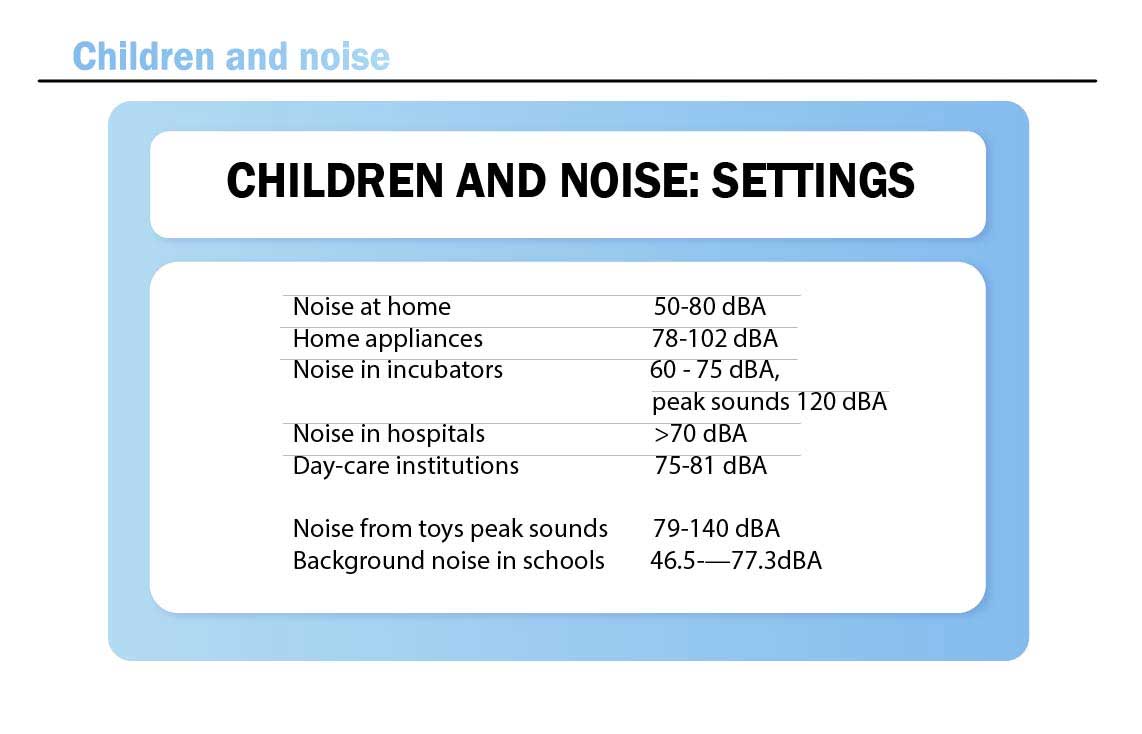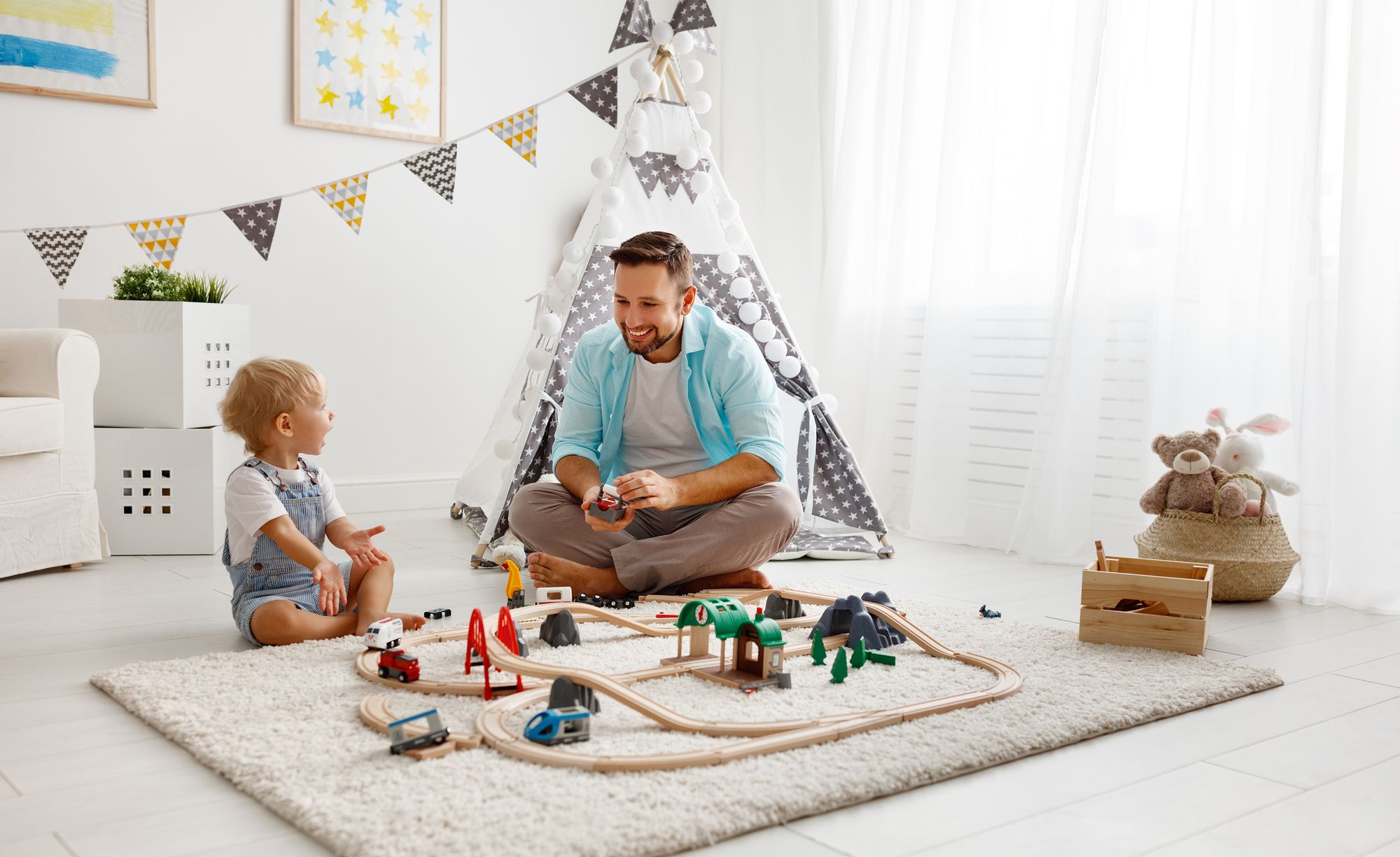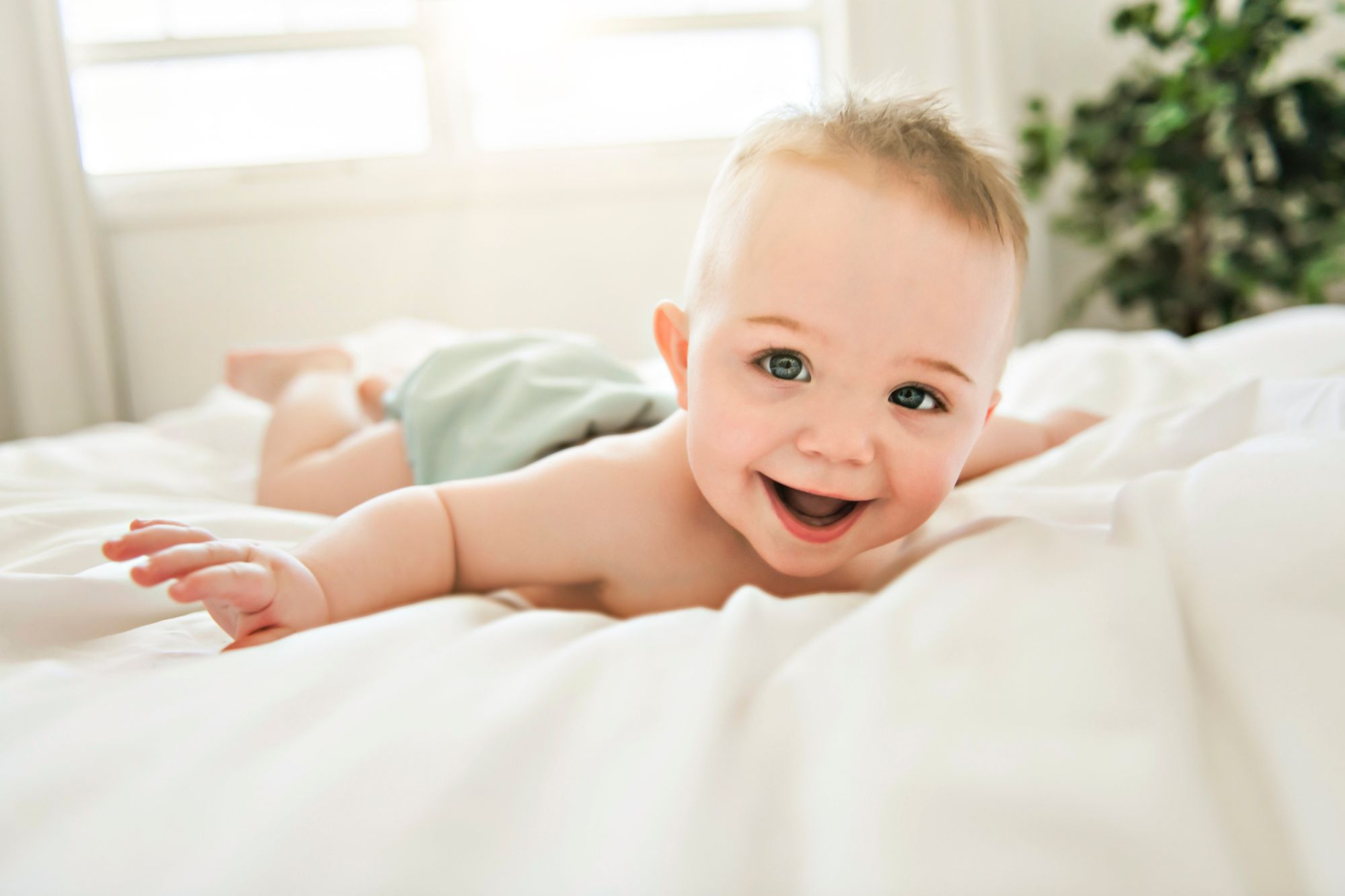- Is Loud Noise Bad For Babies?
- What Decibel Level Is Safe For Babies
- What Problems Loud Sound Can Cause
3.1 Permanent Hearing Loss
3.2 Gradual Hearing Loss - Safe Noise Levels For Babies Sleep
4.1 White Noise Machines - How You Can Help Protect Your Children’s Hearing
5.1 Choose Toys That Do Not Exceed 80-85 Db
5.2 Avoid Toys That Have Sirens Or Make Popping Sounds
5.2 Control The Noise Machine Volume
5.3 Get Ear Muffs For Babies And Young Children - Control The Noise Level Around Baby With DecibelPro.App
Babies and children can be at greater risk of hearing damage or hearing loss than adults. That’s because their inner ear is not fully developed. In fact, their ear canal is smaller, leading to greater sound pressure. This causes loud noise to be even louder for their sensitive ears.
To protect your little one’s hearing, you must be mindful of what decibel levels are safe for babies. Ensuring safe decibel levels for babies is the best way to keep them safe and safeguard their development.
Read on to find out what the safe noise levels for babies are and how you can avoid exposing them to loud noise.
Is Loud Noise Bad for Babies?
Babies rely on us to provide them the best care. We do everything we can to provide them the best food, the most amusing toys, the nicest shelter. Providing safe decibel levels for babies is another aspect we need to consider if we want our little ones to grow up healthy and happy.
Exposure to loud noise can be bad for babies since it can affect their hearing. After all, hearing is how they learn to communicate and a key element in their development. Loud noise can also cause a whole series of secondary health and cognitive issues.
Babies can’t know when noise is too loud or when it could endanger their hearing. Many times, that’s also true for older children or even teenagers. So, it’s the parents’ job to protect children from dangerous exposure and keep their hearing safe.
That’s why, in this article, we’re getting into what decibel level is safe for babies and children alike.
What Decibel Level Is Safe for Babies?
Children and babies are particularly at risk for harm from excessive noise exposure. Their ear canals are not fully developed, and a baby’s auditory faculty is more sensitive than an adult’s. That’s why it’s vital to prevent noise exposures and create safe environments for them.
As a rule of thumb, babies should not be exposed to noise levels over 60 decibels. The noise level recommended for hospital nurseries is actually lower, at 50 dB. For reference, a quiet conversation is between 50 and 55 dB and an alarm clock is 80 dB.
However, with sound, things are not as simple as they seem. Sound is measured in decibels, which is not a linear scale. It is a logarithmic scale. This means that a 100-decibel sound is actually twice as loud as a 90-decibel sound.
Even everyday noises can be too loud for your baby. Below you can find the everyday exposure ranges considered excessive for children by the World Health Organization:

Another important aspect to remember is exposure time. What we consider safe decibel levels for babies is also dependent on how long they are exposed to noise.
Short-term exposure to excessive noise levels can be safe if limited to a few minutes. For instance, when using home appliances like a vacuum cleaner that is between 60-80 dB, your baby should be safe if exposure does not last more than 5-10 minutes.
However, longer exposure is to be avoided. To be safe, you can move the baby to a separate room and away from the noise.
What Problems Loud Sound Can Cause?
Babies and children are more vulnerable to loud sounds because they perceive them differently. Sounds that we may consider normal can be too loud for their sensitive ears. On top of this, they cannot recognize dangerous exposures and can rarely avoid exposure on their own.
On the other hand, children are also often exposed to loud noise. This can occur:
- in parks
- in childcare facilities
- when playing with noisy toys
The problems loud noise can cause may affect more than their hearing. Medical research has shown that exceeding safe noise levels for babies and children can also affect their psychological health.
Noise can negatively impact learning and behavior patterns. It can also:
- affect speech and language-related skills like reading and listening
- impair learning and concentration
- affect the cardiovascular system, raising blood pressure levels
- disrupt sleep and sleep patterns
Permanent Hearing Loss
Exposure to unsafe noise levels impacts many children. It is estimated that 5 million children suffer from Noise-Induced Hearing Loss (NIHL). This is a permanent hearing impairment directly caused by prolonged exposure. It can be caused by high levels of noise or by sudden high levels of impulse noise.
Symptoms may include:
- slow reaction to loud noises
- difficulty understanding speech
- speaking loudly
- ringing, roaring, or hissing sounds in the ear
Gradual Hearing Loss
Gradual hearing loss often goes unnoticed. It can start with mild symptoms like tinnitus (ringing or buzzing in the ear). In time, tolerance to high levels of noise can increase. But, left untreated, mild symptoms can develop over time and lead to permanent hearing loss.
For this reason, regular hearing tests are recommended for children. Regular tests can help identify hearing issues before they turn into permanent ones. You can also try to limit how long the children spend participating in noisy activities and teach them to avoid sources of loud noise.
Safe Noise Levels for Babies Sleep
Babies can be particularly vulnerable to loud noises when they sleep. 50-60 decibels is the safe decibel level recommended for babies’ sleep. It is also the recommended noise limit for infants in hospital nurseries.
Exposure to higher decibel levels is considered unsafe for babies’ sleep and can affect their sleep quality, sleep patterns, and development.
White Noise Machines

White noise machines are the latest trend in baby care and a solution used by many parents to help their babies sleep soundly through the night.
White noise is actually a collection of sounds that mask other sounds such as household noise or traffic. These machines play specific sounds like beach sounds, rain sounds, or lullabies to encourage sleep and block out unpleasant noise.
The advantages of white noise are that it can put babies to sleep quicker and help them sleep for longer periods at a time.
However, one disadvantage of white noise is that it can exceed safe decibel levels for babies. Studies have found that white noise machines can reach decibel levels of 85 dB, which is well over the safe decibel level for babies of 50-60 dB.
How You Can Help Protect Your Children’s Hearing
Now that you know what decibel level is safe for babies, let’s take a look at how you can protect your children’s hearing no matter their age.
To avoid the damaging effects of excessive noise, you can:
- teach children to avoid loud noises no matter where they are
- limit the time children spend participating in noisy activities
- limit the time children listen to loud music for
- perform regular hearing tests (at a specialized doctor or using home tests)
- ensure the children wear appropriate hearing protection when attending concerts or sporting events
Here are a few more tips on protecting your children’s hearing:
Choose Toys That Do Not Exceed 80-85 Db

Yes, loud toys are popular. Many times, the louder they are, the more children will want them. Still, you must resist the urge to buy loud toys for your children or let them play with loud toys.
Some of these toys can generate decibel levels as high as 90-120 dB, way over the safe decibel levels. Such high decibel levels can be very harmful especially since children keep them close to the ear.
Test toys with a sound level meter or a sound level meter app to keep the decibel level under 80-85 dB or simply take out the batteries from loud toys.
Avoid Toys That Have Sirens or Make Popping Sounds
Toys that have sirens or make popping sounds can be particularly harmful. They can be very loud. Some can go as high as 150 dB. That is over the threshold of pain and the same as the sound of a jet takeoff. It can lead to serious damage like eardrum ruptures.
For babies, you should limit the toy noise level to 60 dB. For toddlers, you can increase the limit to 70 dB.
Control the Noise Machine Volume
Noise machines can get as loud as 85 dB. That is not a safe decibel level for babies especially if the exposure is prolonged. They can cause temporary and even permanent damage to the baby’s ear.
If you are using a white noise machine to help your baby sleep, keep the volume at a reasonably low level. The best is to keep it under 60 dB. Also place the noise machine further away from the crib and try not to run it constantly.
Get Ear Muffs For Babies And Young Children
If there’s no way of avoiding a baby’s or a child’s exposure to loud noise, consider hearing protection for their safety. There are numerous options available for children-sized earmuffs and noise-canceling headphones that can help keep their hearing safe.
You should avoid earplugs since they can be a choking hazard.
Control the Noise Level Around Your Baby with DecibelPro.App
Decibel Pro is a professional-grade sound level meter app that you can use to ensure safe decibel levels for babies.
Use it to test the noise level of toys, keep the decibel level of white noise machines under the recommended levels, or monitor your household decibel levels. Plus, you can also use it to test your children’s hearing at home and monitor their hearing health.
Simply download Decibel Pro to your iPhone or iPad and open it. It will give you instant readings of noise levels.
To learn more about the Decibel app, click here.



